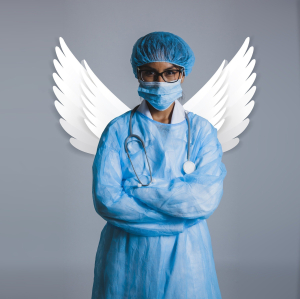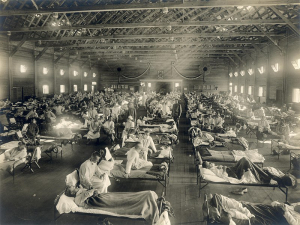 There are too many differences between the COVID-19 pandemic and the 1918 flu pandemic to count. Here are just a few.
There are too many differences between the COVID-19 pandemic and the 1918 flu pandemic to count. Here are just a few.
First, the viruses have almost nothing in common except that they’re viruses. No one even knew the 1918 pandemic was even caused by a virus until years later. Over time, virology evolved. We now produce semi-reliable vaccines against mutations in the H1N1 virus that caused the 2018 flu every year.
With COVID-19 we have a lot more tools. But it's a completely different type of virus, as different from H1N1 as you and I are from whales. Still, we had a model of it available within weeks of the outbreak. We understand about messenger RNA and have hundreds of vaccine candidates now going through testing.
But knowledge has yet to bring power. Until science delivers an answer, we’re mainly doing palliative care, just as we did then. That goes for everyone, making this a true global event. But, as it was in 1918, our willingness to listen to what science DOES know makes a big difference.
This time, unlike 1918, many Americans aren’t listening.
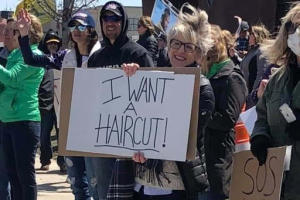 We didn’t lock down hard enough, which means we didn’t lock down long enough. As I write this the pandemic is spreading around the country, especially in rural America, where people thought distance offered immunity. And it’s those places that are opening faster, which means the pandemic will go harder in what I call Trumpistan than it has, so far, in Techlandia.
We didn’t lock down hard enough, which means we didn’t lock down long enough. As I write this the pandemic is spreading around the country, especially in rural America, where people thought distance offered immunity. And it’s those places that are opening faster, which means the pandemic will go harder in what I call Trumpistan than it has, so far, in Techlandia.
This story is only half told. Anyone drawing conclusions right now is drawing the wrong ones.
That said, the current pandemic has a tiny fraction of 1918’s death toll, against a much larger population base. That flu infected a third of the world and killed an estimated 50 million people. So far, COVID-19 has infected only 3-4 million (we think) and killed a few hundred thousand. There were 1.5 billion people living in 1918, against 8 billion today. If this flu takes the same relative toll, you’re looking at 267 million dead people before it’s over.
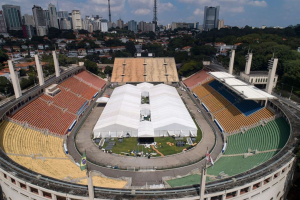
The size of the global population, the size of the global economy, our ability to communicate, and the relative prosperity of people all combine to make this a much, much bigger event. It’s emphasizing differences in class, and politics, as nothing else could. The lesson it should be teaching is that we’re all in this together, that your fate is my fate. But it seems that lesson won’t be learned until more of “my” (white, prosperous) people die horrible deaths to match the toll taken on “your” (non-white, working class) people.
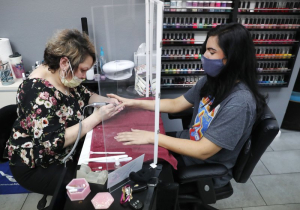
But I know this. Staying put is a luxury. I work at home. So does my wife. Our income has yet to take the full hit of many neighbors.
I had always thought myself middle-class but that's no longer true. I’m upper-class . The middle class consists of those tens of millions who are working to serve us. The lower class consists of those millions more who can’t get work.
So far, they’ve been stoic about things. But for how long?
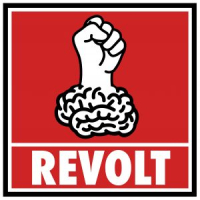
These are the kinds of conditions that create revolutions. Not like the Re-Open revolution. The other kind. The kind with guillotines. If the experiment fails, if hiring doesn’t resume soon, a lot of people are going to go hungry. They’re going to get desperate.
That’s when things get interesting, and not in a good way.
Right now, the pandemic offers a chance to reverse a lot of horrible trends, especially the trend toward fascism. Oil has powered tyranny throughout this decade. Without oil money, Saudi Kings and Russian oligarchs, as well as Texas oilmen, are powerless.
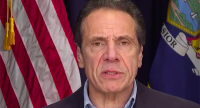
But as we’ve seen with Trump, fascists have a way out. Racism. Sexism. Othering. Get enough people to point fingers at other people, control the flow of online information, and you, too can be Yertle the Turtle. Until the turtle at the bottom sneezes. Tyranny, then, becomes more personal and 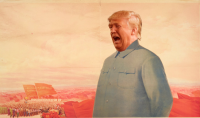
There is a lot for us all to think about while we’re in quarantine. We’re closing one book and opening another. This is a time for dreaming better dreams and working to make them come true.
One thing is certain. While the 1918 pandemic was forgotten for decades, the 2020 pandemic never will be.


